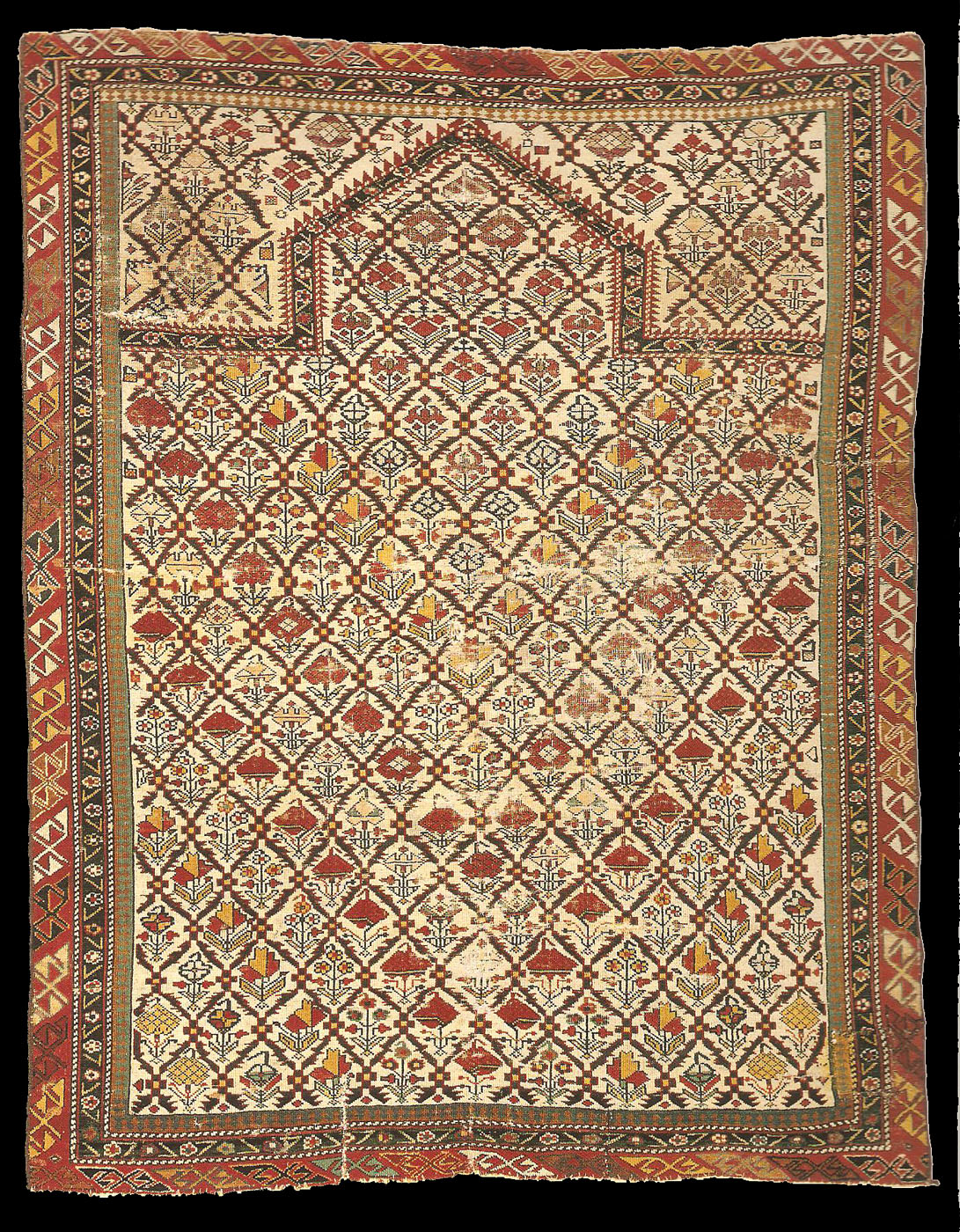|
Antique Shirvan
Kabistan prayer rug,
Southern Shirvan Region, Azerbaijan. early 19th century, 1,02 X 1.30m
(4'3" x 3'4"). Dixon Collection
|
|
This rug belongs to a small, elite family of very finely woven lattice
pattern rugs, usually attributed to Marasali. Rugs in this group feature
rows of flowers arranged in sequence to form a 'V pattern. The depiction of
some of those flowers is usually naturalistic, and red silk is often used in
the pile. Yellow is used in greater proportions than in similar white-ground
lattice pieces.
These pieces, along with certain black Marasalis, are among the most finely
woven of all Caucasian prayer rugs. They all date from the early nineteenth
century. An example in the James Burns collection, formerly in the Yale
University Art Gallery, is dated ah 1230 (1814) and has 324 knots per square
inch, with woollen warp and wefts and selvedges of silk. A very similar
example, from the Andrew Dole collection, was sold at auction in 1976,
misattributed to Senna. An all-wool example, very similar in execution and
colouring to the rug shown here and with 225 knots per square inch, was
published by Herrmann and attributed to Kuba.
published Ralph Kaffel's Caucasian Prayer rug, plate 94
 |

